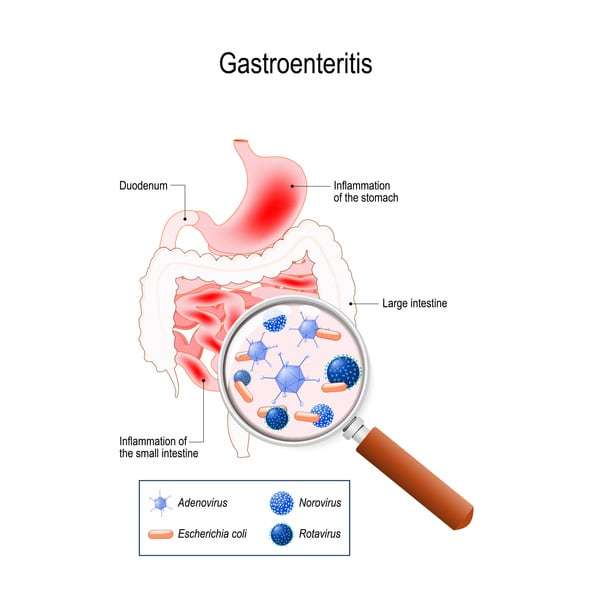Pediatric Gastrointeritis
Published (updated: ).

Gastroenteritis in the pediatric population is a very common disease that could be lethal. It accounts for around 10% of pediatric deaths, estimating 70 million deaths per year around the globe making it the second cause of death worldwide. The most common cause in infants younger than 24 months old is rotavirus, after 24 months of age, Shigella displaces it to second most common.
Etiology
Gastroenteritis occurs when there is a fecal-oral contact, ingestion of contaminated water or food, and person to person. This is the most common way of acquiring this infection and making it the main cause for norovirus and Shigella outbreaks. This disease is associated with bad hygiene and poverty.
In the United States, rotavirus and noroviruses (accountable for almost 58% of all cases) are the most common viral agent that causes diarrhea, followed by enteric Adenoviruses, Sapovirus, and Astroviruses.
The main risk factors for gastroenteritis are environmental, seasonal, and demographics, being you children more susceptible. Other diseases like measles and immunodeficiencies put the patient at a higher risk for a gastrointestinal (GI) infection. Malnutrition is another significant risk factor, like vitamin-A deficiency or zinc deficiency.
Most of the episodes are acute diarrheas, lasting less than one week. When diarrhea lasts more than 14 days, it is considered persistent diarrhea and accounts for 3% to 19% of episodes. Around 50% of death cases due to diarrhea.
Epidemiology
Children under 5 years of age are the most affected population, and diarrheal episodes happen more frequently in Asia and Africa, accounting for 80% of annual incidence
History and Physical
The clinical manifestations will be related to the pathogen. Ingestion of toxins (S. aureus) can lead to a rapid onset of nausea and vomiting within 6 hours of digestion. Patients may have fever, cramps, and diarrhea within 8 to 72 hours.
Enterotoxins like Clostridium perfringens and Bacillus cereus cause watery diarrhea within 8 to 16 hours of ingestion. Viral infections are associated with cramps and watery diarrhea after 16 to 48 hours. Some pathogens are related to bloody diarrhea. These agents can cause symptoms up to 120 hours after ingestion. Some agents can cause manifestations within minutes, for example, copper, shellfish toxins, tin, and other seafood (pufferfish) through tetrodotoxin or scombroid with histamine release.
Overall, symptomatology is not the best way to narrow a possible etiology. Fever is not always present; although, this does not mean that there is no infection. The positive predictive value of dysentery is reduced as well. In the suspicion of acute gastroenteritis, appropriate laboratory testing is needed if the healthcare professional needs to verify the causative agent.
